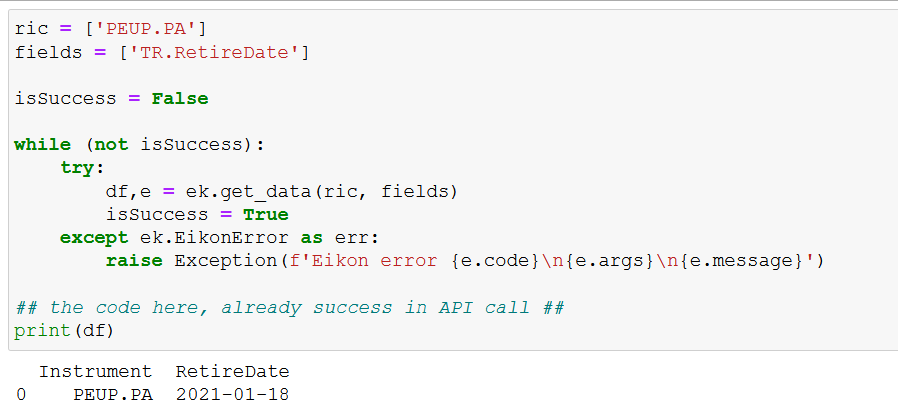Hi,
I'm a newbie to Eikon API
Is there a proscribed code pattern for handling timeouts? I have making a call to `get_data` in a loop: Each request takes about 10s to return but occasionally I get a Timeout (408/504).
I could just trap the timeout error and re-submit using following code as a starting point, but I just wondered is there an accepted/recommended code pattern to use?
thanks
e = None
try:
ek.get_data(instruments, fields)
except ek.EikonError as err:
e = err
# do I trap here and re-call get_data??
raise Exception(f'Eikon error {e.code}\n{e.args}\n{e.message}')




